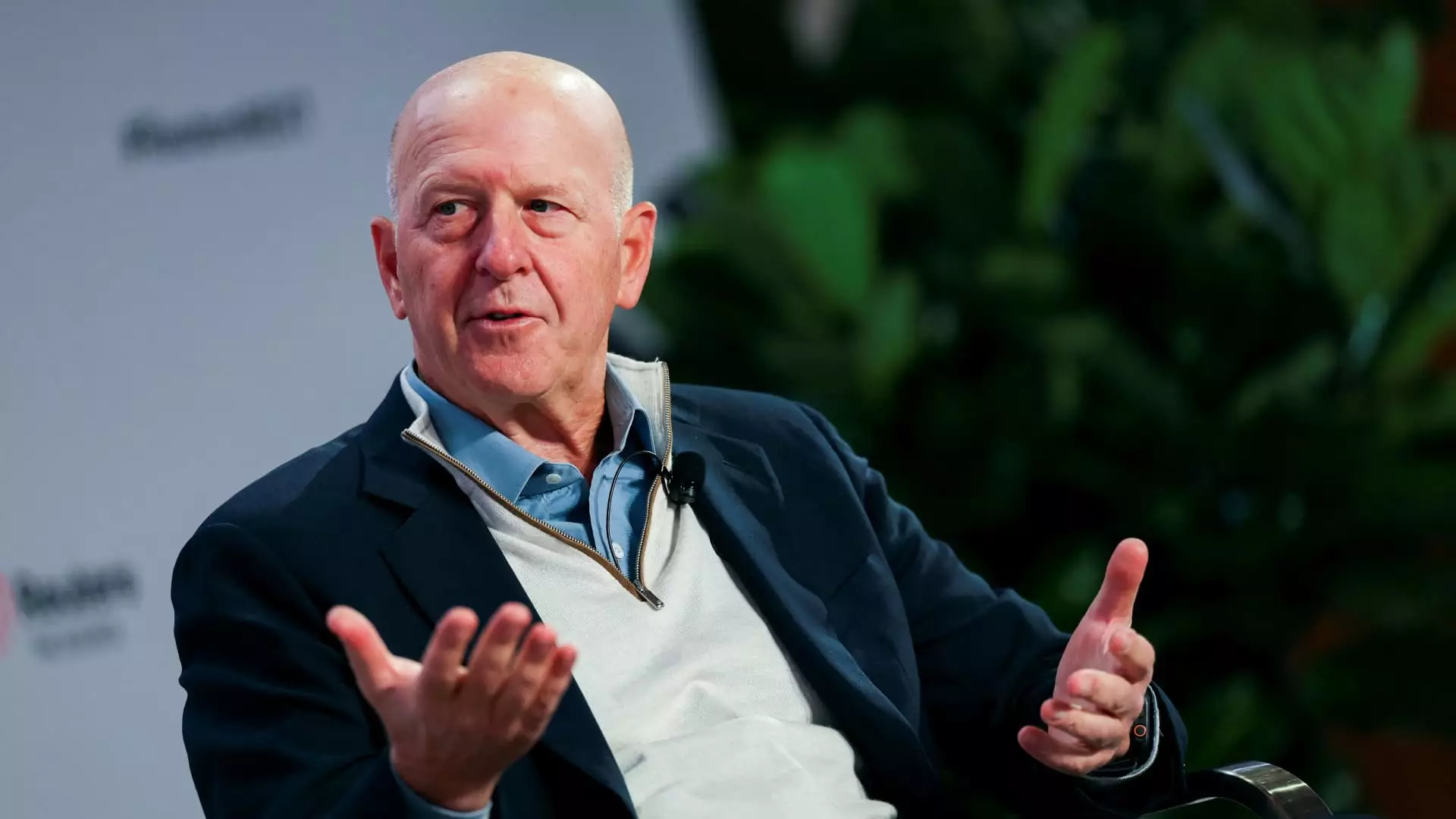The landscape of initial public offerings (IPOs) has been relatively sparse in recent years, primarily oscillating around the highs and lows of market dynamics. David Solomon, the CEO of Goldman Sachs, recently shared a positive outlook regarding the IPO market’s future during an interview at a summit in Silicon Valley. His insights suggest a potential resurgence in not only IPO activity but also mergers and acquisitions (M&A). This article delves into Solomon’s remarks and assesses the multifaceted factors influencing the current IPO climate.
For nearly two years, the IPO market has faced challenges that many companies perceived as a deadlock. Following a peak in investment enthusiasm, particularly in the tech space around late 2021, adverse economic conditions began to undermine investor confidence. Factors such as soaring inflation, rising interest rates, and increased regulatory scrutiny have collectively sapped momentum from the market. The retreat led to a pronounced decrease in the number of successful IPOs as potential issuers awaited a more favorable economic environment, creating what Solomon referred to as a “multi-year IPO drought.”
The lack of activity in the tech sector has been particularly pronounced, as these companies historically contribute significantly to IPO volume. With large technology firms bogged down by stringent regulations, there has been a marked slowdown in M&A activities as well. This discouragement has further fed the perception of a stagnant market, pushing investors and entities alike to adopt a more conservative approach.
In his recent statements, Solomon conveyed a renewed sense of optimism regarding an impending uptick in IPOs, suggesting that the nailed-down momentum for M&A will follow suit. With President-elect Donald Trump’s upcoming inauguration, Solomon implied that the anticipated shift in the political landscape could impact fiscal policies and market dynamics positively. The elation was also echoed in the financial results released by Goldman Sachs, which not only surpassed analyst expectations but also energized market sentiment, illustrated by the S&P 500 experiencing its most substantial gain since November.
It’s evident that the financial markets are beginning to show signs of life once again, sparking hopes that the dormant IPO stage could be nearing an end. Solomon’s commentary reflects a broader sentiment of constructive optimism in the business environment. This optimism is crucial in driving both potential issuers and investors to reassess their strategies.
While the outlook is hopeful, the fundamental dynamics surrounding IPOs have evolved. Solomon pointed out that the number of public companies has dropped significantly over the last quarter-century—from approximately 13,000 to a mere 3,800. This reduction can be attributed to various factors, including the demand for enhanced transparency and compliance that public companies must adhere to. Moreover, the influx of private capital has created a robust alternative for companies that might otherwise consider going public.
The conundrum surrounding whether to venture into public markets is now more complex than ever. Many firms are finding it challenging to justify the transition, as the perceived benefits of being public are often overshadowed by the commitment required in disclosures and governance. Solomon articulated a crucial sentiment when he acknowledged that “it’s not fun being a public company,” reflecting the sentiments of many executives disenchanted with the negativity surrounding earnings reports and market volatility.
As the IPO market begins to show signs of resurgence, implications for potential investors and startup companies will become increasingly significant. New entrants like ServiceTitan have already begun making waves following their IPOs, demonstrating a potential thaw in the market. Meanwhile, companies like Cerebras and Klarna are positioning themselves to take advantage of the improved climate by filing for public offerings.
Furthermore, Solomon’s comments reflect a renewed interest from institutional investors, who are far more likely to participate in IPO investing if the regulatory backdrop appears conducive. This possibility could cultivate an environment where capital is circulated more freely, encouraging companies to explore public offerings as a means to fuel growth and expansion.
While the IPO market has faced significant headwinds in recent years, insights from industry leaders like David Solomon suggest a turning tide. The optimism stemming from potential regulatory shifts, positive earnings reports, and a broader recovery in capital markets indicates that the revival of IPOs may be just around the corner. However, it remains essential for companies to carefully weigh the benefits and challenges of going public in a rapidly evolving marketplace.

